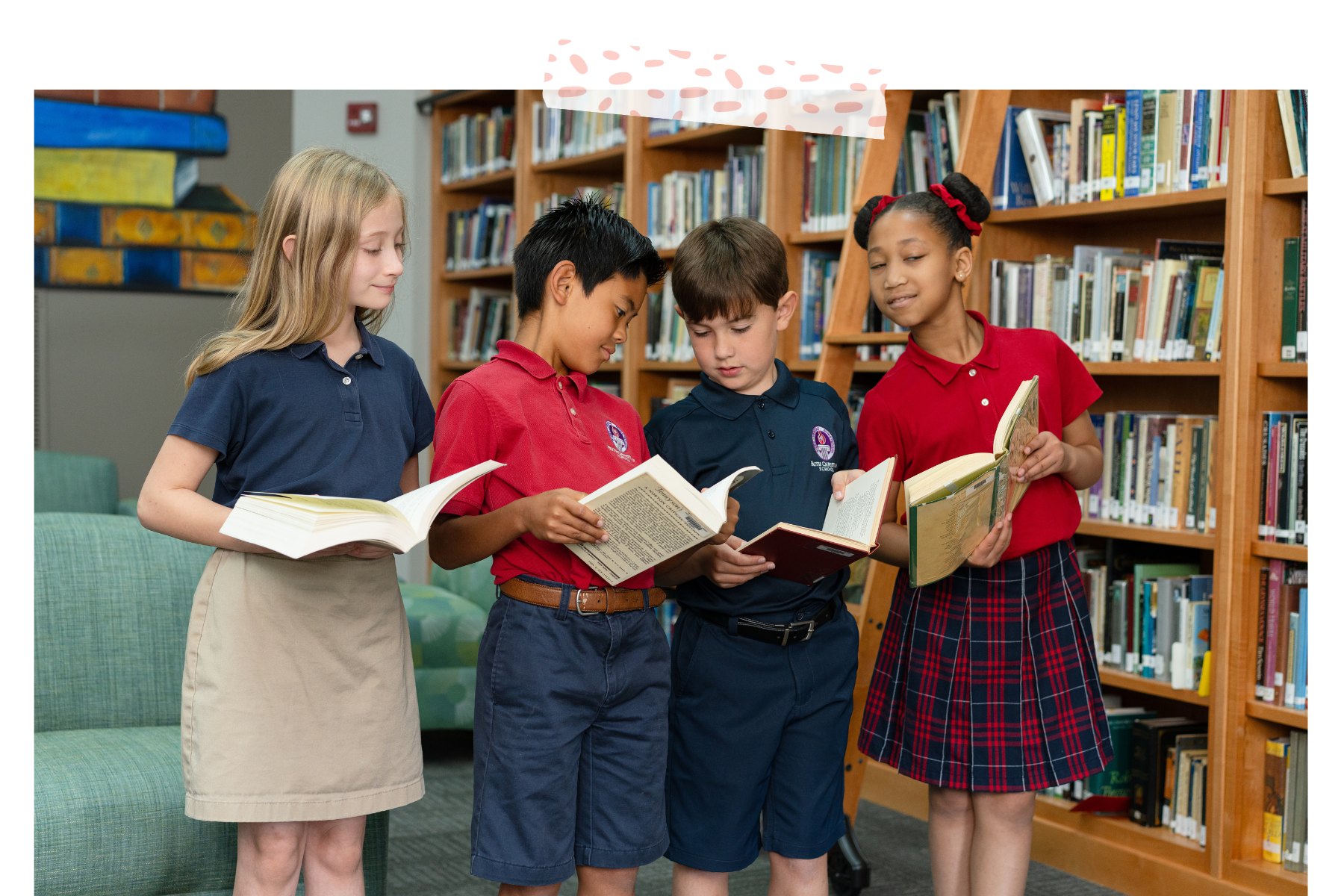
Faith Christian School takes the classical, time-tested, proven method approach to teaching students to read, ensuring they not only learn to read but also LOVE to read!
Perhaps, like me, you don’t remember specifics of how you learned to, only that you did, in fact, learn to read. Through the years, different curricula with differing approaches to teaching reading have been the norm as the pedagogical pendulum has swung from one end to the other.
At Faith Christian School, however, we have always taught students to spell, write, and read by using explicit phonics. Each letter or combination of letters makes a sound or sounds, meaning our students learn the essential sounds and parts that make up a word to better help them approach unknown words.
For example, did you know that the letter “a” has four sounds? We begin teaching the sounds all the single letters make beginning in kindergarten. By the second semester of kindergarten, students are learning multi-letter phonograms like “sh” or “ar.” By the time students complete first grade at FCS, they have mastered the 71 phonograms needed to read, write, and spell virtually every word in the English language!

We use The Writing and Spelling Road to Reading and Thinking curriculum, published by the Riggs Institute. This curriculum utilizes the Orton-Gillingham method, used to help students who struggle with challenges in learning to read, spell, and write – an approach that works with all learners! Using sight, sound, voice, and writing, this method is multi-sensory. Students simultaneously learn to recognize phonograms by sight and sound, and they write them to spell, write, and read words. This method thus builds connections between the areas of the brain that control language. Instead of just memorizing words by sight, students are able to “attack” words by finding the phonograms within each word and decoding words – even words they have never seen before! Additionally, within this curriculum students learn spelling and syllabication rules that help them read, write, and spell with success. Research supports this time-tested approach to teaching students to read.
Decoding words is only one piece of the puzzle to help children learn to read well.
We want students to read fluently, with great expression, comprehending the content,
and of course, enjoying the story!
How do we do that? First, students will begin simply by reading their spelling words, recognizing the phonograms within them, and decoding those words. Then, students begin to read age- and grade-appropriate books and stories, where they are able to apply their knowledge of phonograms, spelling, and syllabication rules to other works. Along with their growth in reading, we teach students the important skill of narration to increase their reading comprehension. (That's a blog post for another day!)
As students grow, we choose stories and books that have stood the test of time for students to read. One of the Basic Understandings at Faith Christian School is that because God created the universe as a unified whole, we integrate subjects to portray reality more accurately. Our students read rich literature and stories that teach them biblical principles, portray themes such as courage and bravery, and convey content about the topics they are studying in science or history. (For example, fifth graders read Johnny Tremaine, a book set in the same time period they are learning about in history.) Learning how to read is not disconnected from everything else. It is an integral part of holistic learning! Students in first grade will practice their skills by reading Aesop’s Fables, while students in fourth grade read The Lion, The Witch, and the Wardrobe, and fifth graders read Dickens’ classic, The Christmas Carol. These books are chosen to help expose students to great works of literature that will expand their vocabulary, help them practice becoming fluent readers as they read these works aloud in class (many of which are considered “above grade level”), and help them to see that all stories can tell us more about the nature and character of God, the One Who wrote these stories on our hearts. Once students have learned to read, they can begin reading to learn, and whole new worlds are opened up to them!
How can you help at home? First, help your child by practicing phonograms at home. Once these are mastered, decoding skills really take off! Second, third, and fourth grades: read, read, read to your child! Even when they are able to read to themselves, read to them! (I still read aloud to my kids who are in high school.) As shared on the Read Aloud Revival podcast (a resource I highly recommend), there are many benefits to reading aloud to your child. By reading books that are above a child’s reading level, you help them to improve in academic performance, vocabulary, and information processing skills. It also helps students to hear excellent fluency and expression. They will model what they hear. So, grab a good book and read to your child!
In short, how do we at FCS teach a child to read? We use a systematic, explicitly phonics-based approach supported by research. We choose great literature and teach necessary skills to students (like narration) to help them grow in their ability to read, all while helping them fall in love with great stories by reading aloud to them. Our goal is for our students to fall in love with reading and become life-long readers and learners!
- Kristan Brown, Divisions Head


-1.png?width=296&height=50&name=Back%20To%20All%20Stories%20(1)-1.png)